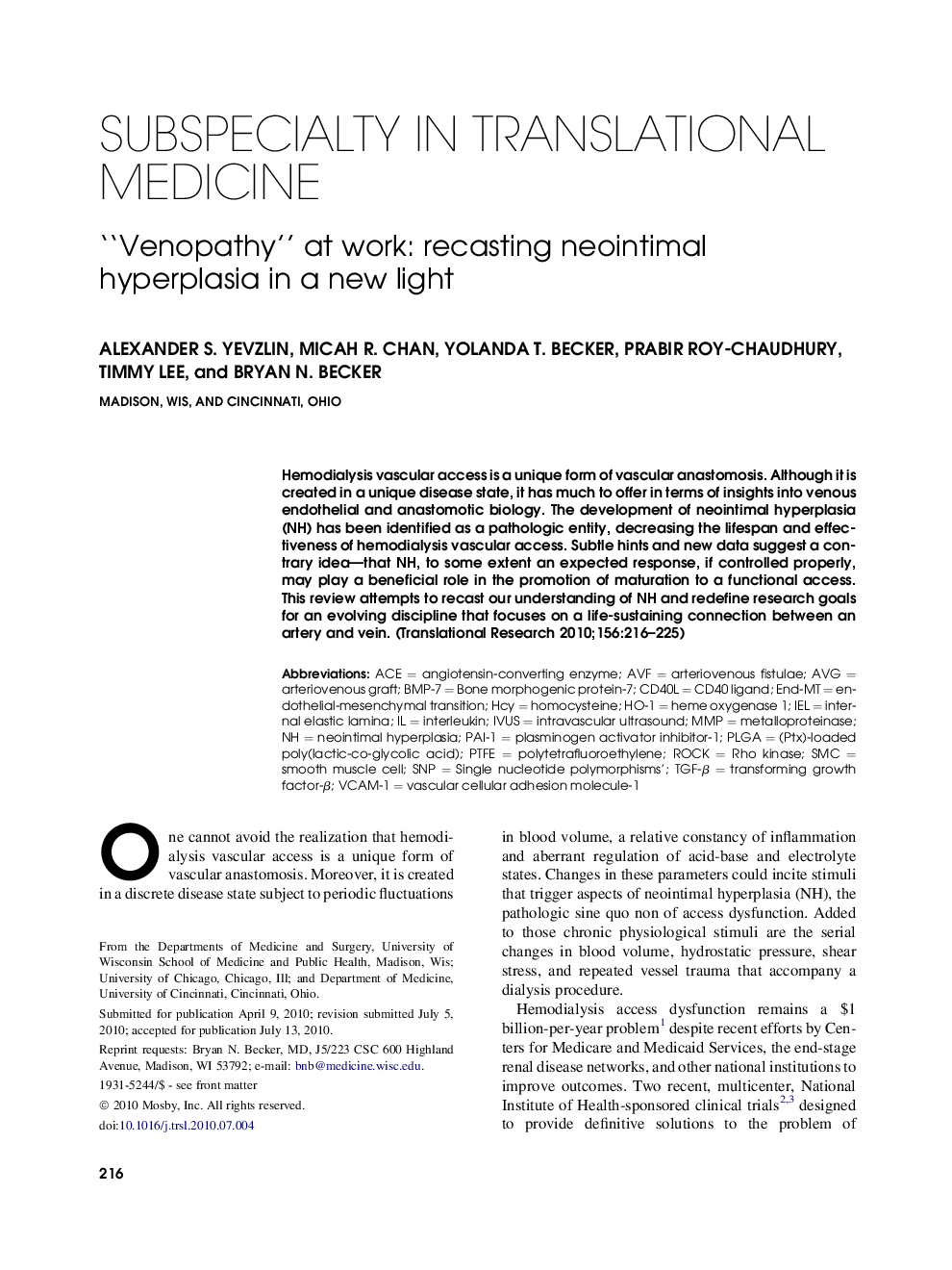| Article ID | Journal | Published Year | Pages | File Type |
|---|---|---|---|---|
| 3840923 | Translational Research | 2010 | 10 Pages |
Hemodialysis vascular access is a unique form of vascular anastomosis. Although it is created in a unique disease state, it has much to offer in terms of insights into venous endothelial and anastomotic biology. The development of neointimal hyperplasia (NH) has been identified as a pathologic entity, decreasing the lifespan and effectiveness of hemodialysis vascular access. Subtle hints and new data suggest a contrary idea—that NH, to some extent an expected response, if controlled properly, may play a beneficial role in the promotion of maturation to a functional access. This review attempts to recast our understanding of NH and redefine research goals for an evolving discipline that focuses on a life-sustaining connection between an artery and vein.
